
- LEADER INDUSTRIAL MANUFACTURE CO., LTD
- Original SKF Rolling Bearings Standard Timken Plain Bearings From USA Standard Timken Roller Bearings
Home> Company News> Selection, installation and commissioning of hydraulic pumps
- AddressTianqiao, Beiyuan District, Jinan,Shandong
- Factory AddressMinzhinan Building, Tianqiao, Beiyuan District, Jinan,Shandong
- Worktime9:00-18:00(Beijing time)
- Phone(Working Time)86-510-85321258
Selection, installation and commissioning of hydraulic pumps
2018-08-29 14:14:34The hydraulic pump is the energy conversion device of the hydraulic transmission system. Its function is to transform the mechanical energy of prime mover into pressure energy and transport pressure oil to the system. The selection, installation and commissioning of the hydraulic pump is very important for the whole system to work normally.
Part1.Selection of hydraulic pumps
The structure of hydraulic pump can be divided into four categories: gear pump, vane pump, screw pump and plunger pump. Many factors should be considered when selecting hydraulic pumps.
1. select the pump according to the pressure and flow of the hydraulic transmission system. As far as gear pump is concerned, it is divided into low, medium and high pressure, low pressure is inkstone.2S MPa, medium pressure is 8-116 MPa and high pressure is 20-31S MPa. At the same time, the displacement of gear pump is determined according to the flow required by the system and the speed of the original engine. Because the gear pump is a quantitative pump, so the selected pump flow as far as possible with the actuator required flow, in order to avoid unnecessary power loss. If the system uses vane pump, Y B I series or Y B-D type medium pressure vane pump can be selected when the pressure is below 10M P; if the common working pressure is above 10M P a, medium and high pressure vane pump should be selected. If the system uses a plunger pump, generally speaking, the hydraulic system in the fixed equipment of the working pressure can choose the pump rated pressure of 70% to 80% to ensure that the pump has sufficient service life.
2. select the pump according to the requirements of the system for noise and flow pulsation rate. The noise of the external meshing gear pump is bigger, the flow pulsation rate is bigger, the noise of the internal meshing gear pump is smaller, and the flow pulsation rate is smaller. The noise of vane pump and plunger pump is lower than that of single vane pump. As far as the flow pulsation rate is concerned, the flow pulsation rate of double-acting vane pump is the smallest, and that of single-acting pump and plunger pump is medium.
3. consider the selection of pumps from the aspects of reliability, life and price. The life of double-acting vane pump is longer, but that of single-acting vane pump, plunger pump and gear pump is shorter. Compared with vane pump and gear pump, plunger pump is more expensive in price, but its performance and reliability are better than them. Therefore, the lower price hydraulic pump should be selected as far as possible on the premise that the performance and life of the pump meet the requirements of the main engine.
4. consider the selection of pumps from the perspective of pollution. Low pressure gear pumps have low pollution sensitivity, allowing the system to select filters with low filtration accuracy; on the contrary, high pressure gear pumps have high pollution sensitivity. Vane pump and plunger pump are sensitive to oil pollution. If vane pump and plunger pump are used, filtration should be strengthened.
5.from the perspective of energy conservation. In order to save energy and reduce power consumption, variable displacement pump should be selected, and variable displacement vane pump with proportional pressure and proportional flow control is preferred. The use of double pumps, triple pumps and multistage pumps is also a way to save energy. When selecting a hydraulic pump, the reliability and economy of the pump should be considered comprehensively. It is easy to use and maintain, and its performance is reasonable.
Part2. Installation of hydraulic pump
Hydraulic pump is one of the main components to produce and transmit noise. The first is to produce noise, and the second is to transmit noise. Hydraulic pump mainly produces mechanical noise and fluid noise, both of which are directly related to the installation of the pump. Therefore, the hydraulic pump must pay attention to the correct installation.
1. When installing the pump, the axis of the pump and the axis of the motor or prime mover should maintain a certain degree of coaxiality. For the gear pump, the elastic coupling is used in the installation between the rotating shaft of the pump and the output shaft of the prime mover. The different axiality of the elastic coupling should not be greater than 0.1 m, and the different axiality of the shaft sleeve coupling should not be greater than.0. 0.5 m; for vane pumps, it is generally required that different axes should not be less than 0.1 m, and flexible connection should be used between the pump and motor; also for the installation accuracy of swashplate axial pump put forward specific requirements: a kind of swashplate axial pump installed with support, its coaxiality check tolerance of 0.1 m, vertical The tolerance of straightness inspection is 0.1m; the second is the installation accuracy requirement of flange installation. The tolerance of radial flange coaxiality inspection of mandrel is 0.1m; the tolerance of flange perpendicularity inspection is 0.1m; the third is the installation of pulley or gear by bearing bracket, and then through elastic coupling. The shaft joint is connected with the pump to ensure that the driving shaft of the pump does not bear radial force and axial force. The allowable force should be strictly controlled within the allowable range, and in special cases, the rotor should be precisely balanced in order to avoid resonance as far as possible. The installation of common filter hydraulic pump suction nozzle filter accuracy should be based on the accuracy requirements of the equipment. In order to avoid suction, it is strictly prohibited to use precise filters. For gear pump filtration accuracy should be arrested 40 m, commonly used in oil suction mesh filter. For vane pumps and plunger pumps, the cleanliness of the oil should reach the national standard level of 16/19, and the filter accuracy used is mostly 25-3 M. The correct selection and installation of the suction port filter will reduce the hydraulic failure obviously and prolong the service life of each component greatly.
3. Installation requirements for piping In order to reduce fluid noise, avoid cavitation and hydraulic shock and produce noise, vibration and heat, the pump piping installation must be correct.
(1) the installation height of the intake pipe must not be 0.5 meters dry. The intake pipe must be cleaned and tightly combined with the pump with the intake port. Sealant can be added if necessary to prevent air from entering the hydraulic system.
(2) The elbows of the oil intake pipeline should not be too many (not more than 2 at most). The inlet of the oil intake pipeline should be connected with a filter, and the ground filter should not be allowed to expose the oil surface of the tank. When the pump is in normal operation, its oil surface should be at least 1.0 m from the top of the filter to prevent air from entering. The effective oil flow area of the filter is generally not less than 50 times the cross-sectional area of the oil pipe at the inlet of the pump, and the filter should be cleaned regularly to avoid clogging.
(3) the diameter of the suction pipe, the discharge pipe and the return pipe should not be less than the specified value.
(4) The return pipe of the pump is used to drain the leaking oil from the pump back to the tank, and at the same time plays the role of cooling and blowdown. Usually, the oil pressure inside the pump body should not exceed.0 M a P. Therefore, the leakage return pipe of the pump should not be connected with other return pipes of the hydraulic system, so as to prevent the pressure shock wave of the system from passing into the pump shell, destroying the normal operation of the pump or making the pump shell lack of lubricant, forming dry friction, burning out the components. The leakage return pipe of the pump should be separately passed into the tank and inserted below the tank level to prevent air from entering the hydraulic system.
(5) In order to prevent the vibration and noise of the pump from transmitting to the system along the pipeline, a section of hose can be installed at the suction port and the pressure outlet of the pump, but the hose at the pressure outlet should be installed vertically and the length should not exceed 4060m. The hose at the suction port should not be allowed to appear because of the vacuum in the pipe. Flatten.
(6) pay attention to the rotation direction of the pump and the position of the oil inlet and outlet must not be mistaken.
Part3. Commissioning of hydraulic pump After the installation of the hydraulic pump is completed, it must be checked and debugged to find out whether the pump is working properly.
1. use the hand to turn the coupling. It should feel light and uniform, so as to find the installation of the pump is normal.
2. Check the rotating direction of the pump should be in accordance with the direction indicated by the sign on the pump body, not opposite.
3. Check whether the hydraulic system has a load release circuit, whether it is possible to cause full load start and stop, so as to reduce the pump life, and overload the prime mover.
4. check whether the relief valve (safety valve) is on the approved pressure.
5. Before the first test run, the pump should be filled with oil at the outlet, so that there is oil in the pump, so as not to damage the components due to dry friction when the pump starts, and the safety valve should be opened.
6. The pump should be operated at no less than 10 minutes before operation, check whether the sound of the pump is normal and the direction of the liquid flow is correct. If normal, you can carry out the test run with load. Firstly, the pressure of the relief valve is adjusted to 10-115 m i n below J 2.o MPa to check the operation, leakage, noise and temperature rise of the system. If everything is normal, the pressure of the relief valve can be adjusted to the safety protection pressure of the hydraulic system, and then the hydraulic system can be relieved of load. If abnormal, find out the cause, then do the commissioning and trial run until the pump works normally.
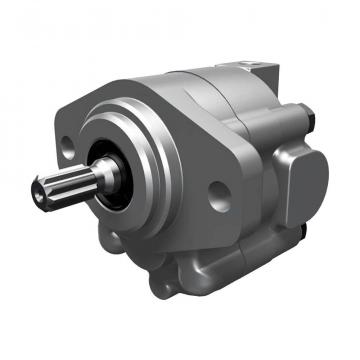 Large inventory, brand new and Original Hydraulic USA VICKERS Pump PVM057MR07GE02AAB28110000A0A
Large inventory, brand new and Original Hydraulic USA VICKERS Pump PVM057MR07GE02AAB28110000A0A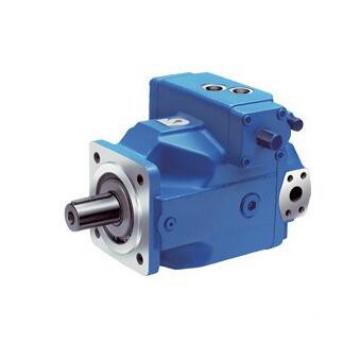 Large inventory, brand new and Original Hydraulic USA VICKERS Pump PVH131R02AF30B252000001001AA010A
Large inventory, brand new and Original Hydraulic USA VICKERS Pump PVH131R02AF30B252000001001AA010A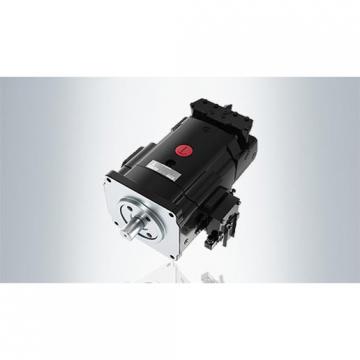 Large inventory, brand new and Original Hydraulic Parker Piston Pump 400481003321 PV270R1L1M3NYLC+PV270R1L
Large inventory, brand new and Original Hydraulic Parker Piston Pump 400481003321 PV270R1L1M3NYLC+PV270R1L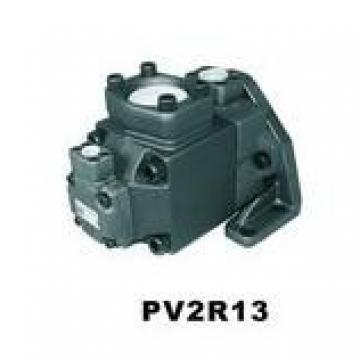 Large inventory, brand new and Original Hydraulic Parker Piston Pump 400481004200 PV270R9K1T1NUPZK0045+PVA
Large inventory, brand new and Original Hydraulic Parker Piston Pump 400481004200 PV270R9K1T1NUPZK0045+PVA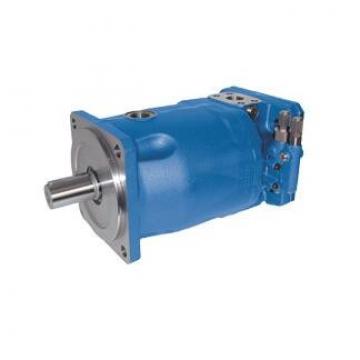 Large inventory, brand new and Original Hydraulic USA VICKERS Pump PVM063ER09ES02AAA21000000A0A
Large inventory, brand new and Original Hydraulic USA VICKERS Pump PVM063ER09ES02AAA21000000A0A
Original SKF Rolling Bearings Standard Timken Plain Bearings From USA Original famous brands Spherical Roller Bearings Original famous brands Aligning Ball Bearings Standad Hydraulic drawbench kit Timken Electrical Service parts NSK Ball Bearings Country of origin Japan High quality mechanical spare parts. All kinds of brand Bearings SKF,NSK,NTN,Timken NSK Single Row Deep Groove Ball Bearings All kinds of brand Roller bearings Timken,SKF,NTN